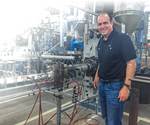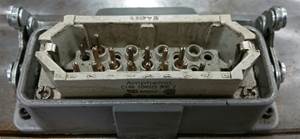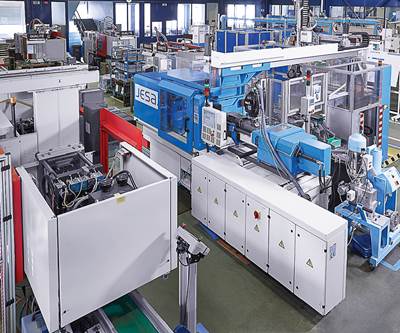New PC Helps Molder Cuts Costs for Automotive Lighting Bezels.
Use of SABIC’s super high-flow PC allowed Brazilian molder to lower development costs and produce a thinner automotive front lighting bezel.
A very high-flow, easy-mold-release polycarbonate allowed Brazilian molder Industrias Arteb SA to reduce development costs by using its existing injection molding machine to produce a thinner automotive front lighting bezel for a new compact sport utility vehicle. One of the largest vehicle lighting suppliers in Latin America, Arteb operates about 50 injection machines.
Looking to improve the processability and product quality, the company set out to replace a standard high-flow PC with a better material. Arteb evaluated several other high-flow PC grades before opting for one from the super-high-flow Lexan HF portfolio of SABIC, according to Jarbas Enzenberg, Arteb’s engineering and quality director. Arteb chose Lexan HF4010 SR based on its overall performance—it enabled use of a lower clamping force and injection pressure than lower-flow PC resins, while reducing cycle times and part thickness. SABIC’s technical support also factored into Arteb’s decision.

Super-high-flow Lexan HF used in this thinner lighting bezel helped optimize the manufacturing process for improved overall efficiency, including scrap reduction.
The trend toward developing complex, intricate automotive lighting designs using LEDs has created a need for high-performance thermoplastics with exceptional flow and easy mold release. Design elements such as part and function integration, wider, larger and thinner forward and rear lighting components, and critical aesthetics call for materials that can enable thin walls, aggressive styling with sharp draft angles, and an impeccable appearance.
Among SABIC’s PC resins for automotive lighting, Lexan HF4010 SR features the highest flow (42 MFR), as measured by melt-volume-rate (40 MVR) testing. Super-high flow not only enables automotive OEMs and tier suppliers to develop complex headlight bezels with enhanced aesthetics, it reduces the amount of clamp force required for tooling. This offers the possibility to use existing injection molding machines for more complex designs that normally would require a higher clamping force.
Says Enzenberg, “Using standard equipment to mold a bezel with a significantly thinner profile and more complex design helped Arteb avoid capital costs while delivering exactly what the OEM required. In addition to the performance of high-flow Lexan resin, an important success factor for this project was the expert assistance that was provided by SABIC’s technical team.”
He also noted that HF4010 SR resin provides a solution to the industry challenge of poor mold release for PC parts with low draft angles. These angles can cause the part to stick in the mold or develop scuff marks when released from the mold, leading to rejects. The easy-release properties of this resin enable faster demolding and reduction of surface defects, even in parts with challenging release angles (0.5° to 1° lower than the recommended PC draft angle) and thin walls.
Enzenberg confirmed that the material’s enhanced flow allows for improved mold filling, lower injection pressure and reduced clamp force. The lower thickness of the part, enabled by the resin’s high flow, also supports reduced cycle time and a higher yield.
Arteb says use of the super-high-flow Lexan HF resins for lighting applications generally can afford cost savings of up to 15%. Still, the bigger value from using the resin is the ability to create designs that would not be possible, allowing manufacturers to take fuller advantage of LED technologies and maximize their use of lighting as a styling and brand differentiator. Based on the success with this project Arteb is now using the material to support lighting programs of other automakers.
Related Content
Back to Basics on Mold Venting (Part 2: Shape, Dimensions, Details)
Here’s how to get the most out of your stationary mold vents.
Read MoreOptimizing Pack & Hold Times for Hot-Runner & Valve-Gated Molds
Using scientific procedures will help you put an end to all that time-consuming trial and error. Part 1 of 2.
Read MoreHow to Reduce Sinks in Injection Molding
Modifications to the common core pin can be a simple solution, but don’t expect all resins to behave the same. Gas assist is also worth a try.
Read MoreHot Runners: How to Maintain Heaters, Thermocouples, and Controls
I conclude this three-part examination of real-world problems and solutions involving hot runners by focusing on heaters, thermocouples, and controls. Part 3 of 3.
Read MoreRead Next
Profile Extruder Sees the Light
Rotuba exited the sheet business to focus on custom profiles for LED light fixtures. It now ranks as North America’s leading profile extruder in this burgeoning market.
Read MoreAutomation Cuts Production Time For LED Lighting Units by 89%
Robot-assisted overmolding helps Swiss company compete with low-wage countries.
Read MoreBeyond Prototypes: 8 Ways the Plastics Industry Is Using 3D Printing
Plastics processors are finding applications for 3D printing around the plant and across the supply chain. Here are 8 examples to look for at NPE2024.
Read More















